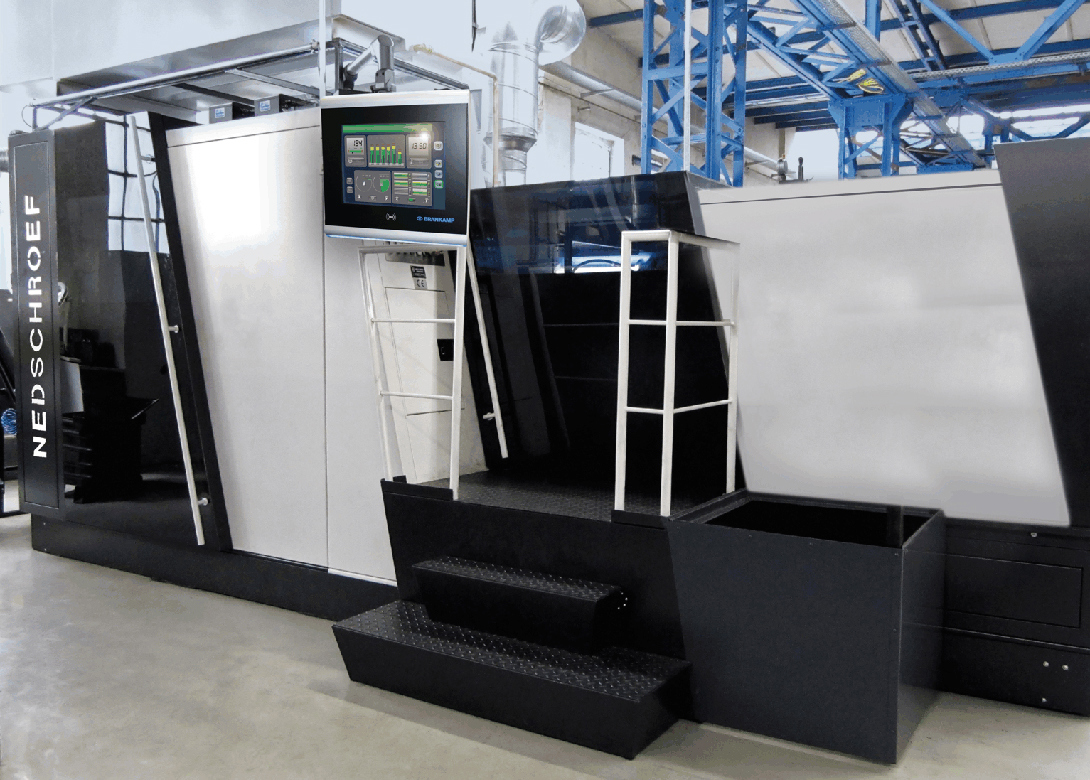
A boltmaker is a combination of three different machines – a header, pointer and threader. To monitor this kind of combined machine, a flexible and powerful monitoring system is necessary – such as the Brankamp X7.
The first operation that should be monitored is the wire stop mechanism to ensure no short cut-offs are transferred to the heading stations. A minimum load is required to be sure that the cut-off is pushed properly to the end stop, otherwise the machine must be stopped or the short cut-off must be dropped/sorted before forming.
Next are the heading stations (4 or 5 stages), which must be monitored with force sensors in each station to prevent overload and ensure a high part quality. Double envelope curves are the best monitoring method to stop the boltmaker in case of major forces being exceeded and to protect the next station.
Inner envelope curves are used in the X7 in case of minor forces, which lead to quality deviation (e.g cracked heads). Quality defects should be sorted out in the last station/finger or behind the header so that the productivity of the boltmaker is not reduced. Additionally, to the station monitoring both rotator or ejector sensors can be added to the monitoring system to detect special production problems in critical stations (e.g turned parts).
After heading, the parts are transported to the pointing station – which is a kind of cutting process with two or three knives. For this type of process Brankamp has developed a special monitoring method, based on power monitoring, to detect incomplete pointed parts or chipped and broken knives. If a failure is detected those parts are sorted out behind the threader, or the machine is stopped if the pointing tool is damaged.
After the pointing process, the threading is performed on a combined header and usually with two force sensors, which measure the upper and lower rolling force – with related envelope curves – to sort out defective bolts (raisers, wrong introduced parts, etc). Additionally, the Brankamp X7 is able to monitor the roll back, if parts are gluing on the threading tool without ejection. In this case the machine and the pusher must be stopped immediately, so that the following part is not introduced into the threading tools.
Several independent sorters (behind wire stop, heading and threading) must be activated under special conditions. Several stop outputs are necessary to stop the machine (e-stop and bdc stop, separate machine stop for the pusher finger, ghost shift stop, conveyor stop, etc), therefore a powerful and flexible machine interface must be used. Additionally, the monitoring system must provide the opportunity to evaluate different type of sensor signals (forces, power, etc) with different monitoring methods (wire stop monitoring, envelope curves, rotator and roll back monitoring).
The Brankamp X7 system, with a flexible number of sensor channels and monitoring methods, protects this type of machine in each operation.

Biog
Having spent a decade in the fastener industry experiencing every facet – from steel mills, fastener manufacturers, wholesalers, distributors, as well as machinery builders and plating + coating companies, Claire has developed an in-depth knowledge of all things fasteners.
Alongside visiting numerous companies, exhibitions and conferences around the world, Claire has also interviewed high profile figures – focusing on key topics impacting the sector and making sure readers stay up to date with the latest developments within the industry.








